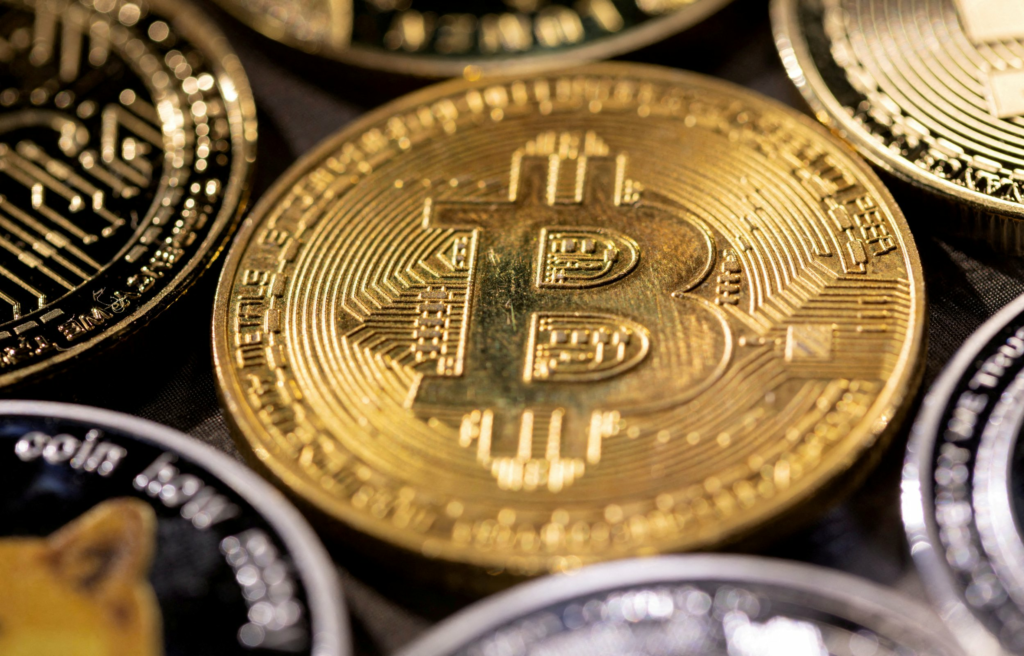The chilling impact of a crypto winter is not all bleak despite millions of investors seeing the value of their assets diminish faster than a snowball’s prospects in a furnace.
These aren’t the words of the latest tub-thumping digital snake-oil salesman selling the aforementioned snowballs but those of the deputy governor of the Bank of England, Sir Jon Cunliffe.
Coming so soon after a widespread collapse of crypto-asset valuations sent panic cascading through online markets – generating high-profile firm failures and seeing Bitcoin, the symbol par excellence of all things crypto, losing 70 per cent of its value since November – some observers might ask if this guardian of fiscal prudence has lost his marbles.
The short answer is, no. Sir Jon has picked his way gingerly through the carnage to highlight the lessons that might be learned as a consequence.
Foremost among them is that finance carries inherent risks.
Claims that assets like Bitcoin can act as a hedge against economic volatility and inflation – working as a sort of “digital gold” – are false, he says.
The reality, he adds, is they are a very speculative, risky asset. Since November, against the background of a weakening global economy, higher inflation, and tighter monetary policy, gold has lost 7 per cent of its value and the FTSE100 has lost 5 per cent. Bitcoin, meanwhile, is down 70 per cent.
“Financial assets with no intrinsic value – that is to say with no real-economy assets backing them and no means of generating revenue – are only worth what the next buyer will pay,” Sir Jon said.
“They are therefore inherently volatile, very vulnerable to sentiment and prone to collapse. The majority of crypto-assets in circulation today fall into this category and are proven to have very erratic swings in value – in both directions – as can be seen from the evidence of the last few months.
“Technology does not make assets with no intrinsic value a safe or a one-way bet.”
Trust in stablecoins, digital assets designed to hold a steady value and pegged to a physical currency, was undermined with the collapse of two of the three largest. One, TerraUSD, had a reputed market value of $18bn. As fear spread, other funds suffered, including one of the biggest, Singapore-based Three Arrows Capital, which filed for bankruptcy last week with its founders’ whereabouts unknown, according to court documents.
Sir Jon says he doesn’t know what the future holds for crypto assets “other than that they will continue to be volatile and that those that invest in them need to understand that the prices can collapse”.
But while some celebrate the demise of Bitcoin and its ilk, dismissing them as a fraudulent Ponzi scheme, Sir Jon was anxious not to throw the baby out with the bathwater – the baby being the technologies developed by crypto devotees. He argues for their possible future use in both the crypto universe and in the larger traditional financial system, suggesting the boundaries between these worlds “will increasingly become blurred”.
Crypto technologies hold out the offer of a brighter future for investors, crypto or otherwise, he says. So-called “smart contracts” offer up the possibility of simplifying the network of relationships currently needed in mainstream finance to trade in shares and bonds.
With these new technologies, all these things could be done at lower cost, greater speed and with transparency, provided firms and regulators can ensure appropriate risk management.
The real question for regulators is not ‘What next for Bitcoin?’ but asking what is needed to ensure this innovation flourishes without “giving rise to increasing and potentially systemic risks”, he believes.
To succeed, the innovation must occur in a framework in which risks are managed. Put bluntly: “People don’t fly for long in unsafe aeroplanes.”
If stablecoin is being used as a “settlement asset” or the “money” in transactions, it must be as safe as the other forms of money – with holders of them having an unambiguous legal claim that enables them to redeem it within the day and on a par with commercial bank money.
Technological differences may mean current rules aren’t fit for purpose. The august bodies who create and supervise the building of the world’s financial architecture are examining them now.
The Financial Stability Board (FSB), which monitors the global financial system, proposes announcing “robust” global rules for cryptocurrencies in October following the recent market turmoil.
For Sir Jon, it is crucial that where regulation cannot be applied in exactly the same way as elsewhere, then the same level of risk mitigation is needed – in other words, “same risk, same regulatory outcome”.
Where specific crypto trades prevent this, and no way can be found to manage the risk to the extent this is done in markets elsewhere, then it must be stopped.
All rights reserved. © 2021 Associated Newspapers Limited.
Author
Administraroot


